Hypothermia for neuroprotection in adults after cardiac arrest
- PMID: 37217440
- PMCID: PMC10202224
- DOI: 10.1002/14651858.CD004128.pub5
Hypothermia for neuroprotection in adults after cardiac arrest
Abstract
Background: Good neurological outcome after cardiac arrest is difficult to achieve. Interventions during the resuscitation phase and treatment within the first hours after the event are critical for a favourable prognosis. Experimental evidence suggests that therapeutic hypothermia is beneficial, and several clinical studies on this topic have been published. This review was originally published in 2009; updated versions were published in 2012 and 2016.
Objectives: To evaluate the benefits and harms of therapeutic hypothermia after cardiac arrest in adults compared to standard treatment.
Search methods: We used standard, extensive Cochrane search methods. The latest search date was 30 September 2022.
Selection criteria: We included randomised controlled trials (RCTs) and quasi-RCTs in adults comparing therapeutic hypothermia after cardiac arrest with standard treatment (control). We included studies with adults cooled by any method, applied within six hours of cardiac arrest, to target body temperatures of 32 °C to 34 °C. Good neurological outcome was defined as no or only minor brain damage allowing people to live an independent life.
Data collection and analysis: We used standard Cochrane methods. Our primary outcome was 1. neurological recovery. Our secondary outcomes were 2. survival to hospital discharge, 3. quality of life, 4. cost-effectiveness and 5.
Adverse events: We used GRADE to assess certainty.
Main results: We found 12 studies with 3956 participants reporting the effects of therapeutic hypothermia on neurological outcome or survival. There were some concerns about the quality of all the studies, and two studies had high risk of bias overall. When we compared conventional cooling methods versus any type of standard treatment (including a body temperature of 36 °C), we found that participants in the therapeutic hypothermia group were more likely to reach a favourable neurological outcome (risk ratio (RR) 1.41, 95% confidence interval (CI) 1.12 to 1.76; 11 studies, 3914 participants). The certainty of the evidence was low. When we compared therapeutic hypothermia with fever prevention or no cooling, we found that participants in the therapeutic hypothermia group were more likely to reach a favourable neurological outcome (RR 1.60, 95% CI 1.15 to 2.23; 8 studies, 2870 participants). The certainty of the evidence was low. When we compared therapeutic hypothermia methods with temperature management at 36 °C, there was no evidence of a difference between groups (RR 1.78, 95% CI 0.70 to 4.53; 3 studies; 1044 participants). The certainty of the evidence was low. Across all studies, the incidence of pneumonia, hypokalaemia and severe arrhythmia was increased amongst participants receiving therapeutic hypothermia (pneumonia: RR 1.09, 95% CI 1.00 to 1.18; 4 trials, 3634 participants; hypokalaemia: RR 1.38, 95% CI 1.03 to 1.84; 2 trials, 975 participants; severe arrhythmia: RR 1.40, 95% CI 1.19 to 1.64; 3 trials, 2163 participants). The certainty of the evidence was low (pneumonia, severe arrhythmia) to very low (hypokalaemia). There were no differences in other reported adverse events between groups.
Authors' conclusions: Current evidence suggests that conventional cooling methods to induce therapeutic hypothermia may improve neurological outcomes after cardiac arrest. We obtained available evidence from studies in which the target temperature was 32 °C to 34 °C.
배경: 심정지 후 좋은 신경학적 결과를 얻기는 어렵다. 호의적인 예후를 위해서는 소생 단계 동안의 중재와 사건 후 첫 몇 시간 내 치료가 중요하다. 실험적 근거에 따르면 치료적 저체온 요법이 유익하며 이 주제에 대한 여러 임상 연구가 발표되었다. 이 검토는 원래 2009년에 게시되었고, 업데이트된 버전은 2012년과 2016년에 게시되었다. 목적: 표준 치료와 비교하여 성인의 심정지 후 치료적 저체온 요법의 이점과 위해를 평가한다. 검색 전략: 표준적이고 광범위한 코크란 검색 방법을 사용했다. 최근 검색 날짜는 2022년 9월 30일이었다. 선정 기준: 심정지 후 치료적 저체온 요법을 표준 치료(대조군)와 비교하는 성인의 무작위 통제 시험(RCT) 및 준 RCT를 포함했다. 32°C~34°C의 체온을 목표로 하기 위해 심정지 6시간 이내에 적용된 모든 방법으로 냉각된 성인을 대상으로 한 연구를 포함했다. 좋은 신경학적 결과는 사람들이 독립적인 삶을 살 수 있도록 하는 뇌 손상이 없거나 경미한 것으로 정의되었다. 자료 수집 및 분석: 표준 코크란 방법을 사용했다. 주요 결과는 1. 신경학적 회복이었다. 2차 결과는 2. 병원 퇴원까지의 생존, 3. 삶의 질, 4. 비용 효율성 및 5. 부작용이었다. GRADE를 사용하여 확실성을 평가했다. 주요 결과: 3956명의 참가자가 신경학적 결과 또는 생존에 미치는 치료적 저체온증의 효과를 보고한 12건의 연구를 발견했다. 모든 연구의 질에 대한 약간의 우려가 있었고, 두 연구는 전반적으로 비뚤림 위험이 높았다. 기존의 냉각 방법과 모든 유형의 표준 치료(체온 36°C 포함)를 비교했을 때 치료적 저체온 요법 그룹의 참가자가 유리한 신경학적 결과(위험비(RR) 1.41, 95% 신뢰 구간(CI) 1.12 ~ 1.76, 11건의 연구, 3914명의 참가자)에 도달할 가능성이 더 높다는 것을 발견했다. 근거의 확실성은 낮았다. 치료적 저체온 요법을 열 예방 또는 냉각 없음과 비교했을 때 치료적 저체온 요법 그룹의 참가자가 유리한 신경학적 결과에 도달할 가능성이 더 높다는 것을 발견했다(RR 1.60, 95% CI 1.15 ~ 2.23; 8개 연구, 2870명의 참가자). 근거의 확실성은 낮았다. 치료적 저체온 요법과 36°C의 온도 관리를 비교했을 때 그룹 간 차이에 대한 근거는 없었다(RR 1.78, 95% CI 0.70 ~ 4.53; 3건의 연구; 1044명의 참가자). 근거의 확실성은 낮았다. 모든 연구에서 저체온 치료를 받는 참가자들 사이에서 폐렴, 저칼륨혈증 및 중증 부정맥의 발생률이 증가했다(폐렴: RR 1.09, 95% CI 1.00~1.18; 4건의 시험, 3634명의 참가자; 저칼륨혈증: RR 1.38, 95% CI 1.03~1.84; 2건의 시험, 975명의 참가자; 심한 부정맥: RR 1.40, 95% CI 1.19~1.64; 3번의 시험, 2163명의 참가자). 근거의 확실성은 낮은(폐렴, 중증 부정맥)수준에서 매우 낮은 수준(저칼륨혈증)이었다. 그룹 간에 보고된 다른 부작용에는 차이가 없었다. 연구진 결론: 현재의 근거는 치료적 저체온증을 유도하는 기존의 냉각 방법이 심정지 후 신경학적 결과를 개선할 수 있음을 시사한다. 목표 온도가 32°C~34°C인 연구에서 사용 가능한 근거를 얻었다.
Trial registration: ClinicalTrials.gov NCT01020916.
Copyright © 2023 The Cochrane Collaboration. Published by John Wiley & Sons, Ltd.
Conflict of interest statement
JA: none.
JO: none.
NS: none.
JV: none.
MH: received travel grants for scientific conferences and honoraria for lectures from Bard Medical, EmCools, and Polimed Sp. z o.o. and Zoll Medical Österreich. He received honoraria for consulting from Zoll Medical Österreich and was responsible for studies for which the Department of Emergency Medicine received study grants from Velomedix and Philips. He was involved in the design, conduct and publication of the HACA 2002 trial. He was not involved in extracting data, or assessing risk of bias and GRADE for the HACA 2002 trial.
CH: was involved in the design, conduct and publication of the HACA 2002 trial. He was not involved in extracting data, or assessing risk of bias and GRADE for the HACA 2002 trial.
HH: none.
Figures

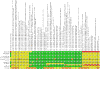
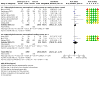

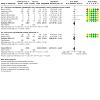
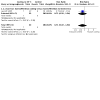


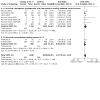


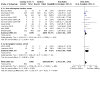

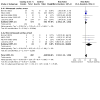
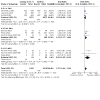

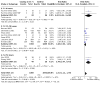

Update of
-
Hypothermia for neuroprotection in adults after cardiopulmonary resuscitation.Cochrane Database Syst Rev. 2016 Feb 15;2(2):CD004128. doi: 10.1002/14651858.CD004128.pub4. Cochrane Database Syst Rev. 2016. Update in: Cochrane Database Syst Rev. 2023 May 22;5:CD004128. doi: 10.1002/14651858.CD004128.pub5. PMID: 26878327 Free PMC article. Updated.
Comment in
-
Magic mirror on the wall, which is the best meta-analysis one of all?Crit Care. 2023 Jul 11;27(1):280. doi: 10.1186/s13054-023-04564-w. Crit Care. 2023. PMID: 37434178 Free PMC article. No abstract available.
References
References to studies included in this review
Bernard 2002 {published and unpublished data}
Dankiewicz 2021 {published data only}34133859
HACA 2002 {published and unpublished data}11856793
-
- Tiainen M, Kovala TT, Takkunen OS, Roine RO. Somatosensory and brainstem auditory evoked potentials in cardiac arrest patients treated with hypothermia. Critical Care Medicine 2005;33(8):1736-40. [PMID: ] - PubMed
-
- Tiainen M, Poutiainen E, Kovala T, Takkunen O, Happola O, Roine RO. Cognitive and neurophysiological outcome of cardiac arrest survivors treated with therapeutic hypothermia. Stroke 2007;38(8):2303-8. [PMID: ] - PubMed
-
- Tiainen M, Roine RO, Pettila V, Takkunen O. Serum neuron-specific enolase and S-100B protein in cardiac arrest patients treated with hypothermia. Stroke 2003;34(12):2881-6. [PMID: ] - PubMed
Hachimi‐Idrissi 2001 {published and unpublished data}
Hachimi‐Idrissi 2005 LSP {published data only}
Hachimi‐Idrissi 2005 SSP {published data only}
Kwon 2021 {published data only}34331985
-
- Kwon WY, Jung YS, Suh GJ, Kim T, Kwak H, Kim T, et al. Regional cerebral oxygen saturation in cardiac arrest survivors undergoing targeted temperature management 36 °C versus 33 °C: a randomized clinical trial. Resuscitation 2021;167:362-71. [DOI: 10.1016/j.resuscitation.2021.07.026] [PMID: ] - DOI - PubMed
Lascarrou 2019 {published data only}
Laurent 2005 {published data only}
Mori 2000 {published and unpublished data}
-
- Mori K, Takeyama Y, Itoh Y, Nara S, Yoshida M, Ura H, et al. A multivariate analysis of prognostic factors in survivors of out-of-hospital cardiac arrest with brain hypothermia. Critical Care Medicine 2000;28:A168. [PMID: 10.1016/j.jacc.2005.04.039] [PMID: ] - DOI
Nielsen 2013 {published data only}
-
- CAEP/ACMU. 2013 CAEP/ACMU Scientific Abstracts, CAEP 2013 June 1–5, 2013, Vancouver, British Columbia. Canadian Journal of Emergency Medicine 2013;15:S1-S79. [EMBASE/OVID ACCESSION NUMBER: 75003618]
-
- Cronberg T, Lilja G, Horn J, Kjaergaard J, Wise MP, Pellis T, et al. Neurologic function and health-related quality of life in patients following targeted temperature management at 33 degrees C vs 36 degrees C after out-of-hospital cardiac arrest: a randomized clinical trial. JAMA Neurology 2015;72(6):634-41. [DOI: 10.1001/jamaneurol.2015.0169.] [PMID: ] - DOI - PubMed
Zhang 2005 {published data only}
-
- Zhang J. Comparison and evaluation of brain-functional protection with mild hypothermia technique and normal temperature technique. Chinese Journal of Clinical Rehabilitation 2005;9(45):136-8. [ISSN: 16715926]
References to studies excluded from this review
Brule 2019 {published data only}
-
- Brule N, Reignier J, Lascarrou J-B, Cariou A, Merdji H, Le Gouge A, et al. Targeted temperature management for cardiac arrest with nonshockable rhythm. New England Journal of Medicine 2019;381(24):2327-37. - PubMed
Caballero 2017 {published data only}
-
- Caballero LA, Cardenas SH, Gonzalez SY, Gonzalez AO, Garzon CH, Reinoso FW. Therapeutic hypothermia in resuscitated cardiopulmonary arrest. CorSalud 2017;9(4):236-41.
CAEP/ACMU 2013 {published data only}
-
- CAEP/ACMU. 2013 CAEP/ACMU Scientific Abstracts, CAEP 2013 Jun 1–5, 2013, Vancouver, British Columbia. Canadian Journal of Emergency Medicine 2013;15:S1-S79. [EMBASE/OVID ACCESSION NUMBER: 75003618]
Eid 2016 {published data only}
-
- Eid SM, Albaeni A, Vaidya D, Chandra-Strobos N, Nazarian SM, Llinas R. Awakening following cardiac arrest: determined by the definitions used or the therapies delivered? Resuscitation 2016;100:38-44. - PubMed
Hackenhaar 2017 {published data only}
JPRN‐UMIN000018229 {published data only}
-
- JPRN-UMIN000018229. Comparative analysis of hypothermia and controlled normothermia on neurological outcome following return of spontaneous circulation after out-of-hospital cardiac arrest. trialsearch.who.int/Trial2.aspx?TrialID=JPRN-UMIN000018229 (first received 7 July 2015).
Kirkegaard 2017 {published data only}
Ko 2019 {published data only}
Kwon 2021b {published data only}
-
- Kwon WY, Jung YS, Suh GJ, Kim T, Kwak H, Kim T, et al. Regional cerebral oxygen saturation in cardiac arrest survivors undergoing targeted temperature management 36 °C versus 33 °C: a randomized clinical trial. Resuscitation 2021;167:362-71. [PMID: ] - PubMed
Lascarrou 2015 {published data only}
-
- Lascarrou JB, Meziani F, Le Gouge A, Boulain T, Bousser J, Belliard, et al. Therapeutic hypothermia after nonshockable cardiac arrest: the HYPERION multicenter, randomized, controlled, assessor-blinded, superiority trial. Scandinavian Journal of Trauma, Resuscitation and Emergency Medicine 2015;23(1):1-12. - PMC - PubMed
Lascarrou 2019a {published data only}
-
- Lascarrou JB, Reignier J, Meziani F, Le Gouge A, Colin G, Grillet G, et al. Targeted temperature management at 33 degree C versus 37 degreeC after non-shockable cardiac arrest: the HYPERION randomized clinical trial. Intensive Care Medicine Experimental 2019;7(Suppl 3):633. [ABSTRACT NUMBER: 000143]
Le May 2021 {published data only}
Li 2015 {published data only}
-
- Li ZH, Zhao YL, Zhu W, Yang G. The significance of mild hypothermia therapy on patients with successful resuscitation of cardiac arrest. European Review for Medical and Pharmacological Sciences 2015;19(15):2860-5. - PubMed
Lopez‐de‐Sa 2016 {published data only}
-
- Lopez-de-Sa E, Juarez M, Armada E, Sanchez-Salade JC, Sanchez PL, Loma-Osorie P, et al. A pilot multicenter randomized trial on the effectiveness of different levels of cooling in comatose survivors of out-of-hospital cardiac arrest. FROST-I trial. Circulation 2016;134(25):E717-E717.
Lopez‐de‐Sa 2017 {published data only}
-
- Lopez-de-Sa EA, Juarez M, Armada E, Monedero MC, Lopez-Sendon JL, Sanchez-Salado JC, et al. One year results of the finding the optimal cooling temperature after out-of-hospital cardiac arrest trial. FROST-I Pilot trial. Circulation 2017;136:e466.
Maynard 2015 {published data only}
-
- Maynard C, Longstreth WT Jr, Nichol G, Hallstrom Al, Kudenchuk PJ, Rea T, et al. Effect of prehospital induction of mild hypothermia on 3-month neurological status and 1-year survival among adults with cardiac arrest: long-term follow-up of a randomized, clinical trial. Journal of the American Heart Association 2015;4(3):e001693. - PMC - PubMed
NCT02889744 {published data only}
-
- NCT02889744. Comparison of cerebral sctO2 between 36°C and 33°C of TTM after cardiac arrest. clinicaltrials.gov/ct2/show/NCT02889744 (first received 7 September 2016).
Pang 2016 {published data only}
Scales 2017 {published data only}
-
- Scales DC, Cheskes S, Verbeek PR, Pinto R, Austin D, Brooks SC, et al. Prehospital cooling to improve successful targeted temperature management after cardiac arrest: a randomized controlled trial. Resuscitation 2017;121:187-94. - PubMed
Takeda 2014 {published data only}
-
- Takeda Y, Kawashima T, Kiyota K, Oda S, Morimoto N, Kobata H, et al. Feasibility study of immediate pharyngeal cooling initiation in cardiac arrest patients after arrival at the emergency room. Resuscitation 2014;85(12):1647-53. [PMID: ] - PubMed
-
- Takeda Y, Shiraishi K, Naito H, Hagioka S, Morimoto N, Morita K. A randomized controlled trial of pharyngeal cooling system during cardiopulmonary resuscitation. Journal of Neurosurgical Anesthesiology 2009;21(4):407-8. [DOI: 10.1097/01.ana.0000358102.35410.08] [EMBASE: 70034508] - DOI
Tokur 2015 {published data only}
-
- Tokur ME. Neurologic function and health-related quality of life in patients following targeted temperature management at 33°c vs 36°c after out-of-hospital cardiac arrest: a randomized clinical trial. Journal of Medical and Surgical Intensive Care Medicine 2015;6(3):113-4.
References to studies awaiting assessment
Wolfrum 2022 {published data only}
-
- Wolfrum S, Roedl K, Hanebutte A, Pfeifer R, Kurowski V, Riessen R, Daubmann A, Braune S, Söffker G, Bibiza-Freiwald E, Wegscheider K, Schunkert H, Thiele H, Kluge S, Hypothermia After In-Hospital Cardiac Arrest Study Group. Temperature Control After In-Hospital Cardiac Arrest: A Randomized Clinical Trial. Circulation Nov 2022;146(18):1357-1366. - PubMed
Additional references
Altman 1991
-
- Altman D. Practical statistics for medical research. London (UK): Chapman & Hall, 1991. [DOI: 10.1201/9780429258589] - DOI
Aneman 2022
Arrich 2009b
-
- Arrich J, Zeiner A, Sterz F, Janata A, Uray T, Richling N, et al. Factors associated with a change in functional outcome between one month and six months after cardiac arrest: a retrospective cohort study. Cochrane Database of Systematic Reviews 2009, Issue 8. Art. No: CD004128. [DOI: 10.1002/14651858.CD004128.pub2] [PMID: ] - DOI - PubMed
Arrich 2021
-
- Arrich J, Herkner H, Müllner D, Behringer W. Targeted temperature management after cardiac arrest. A systematic review and meta-analysis of animal studies. Resuscitation 2021;162:47-55. [PMID: ] - PubMed
Chaimani 2022
-
- Chaimani A, Caldwell DM, Li T, Higgins JP, Salanti G. Chapter 11: Undertaking network meta-analyses. In: Higgins JP, Thomas J, Chandler J, Cumpston M, Li T, Page MJ, Welch VA, editor(s). Cochrane Handbook for Systematic Reviews of Interventions Version 6.3 (updated February 2022). Available from www.training.cochrane.org/handbook.
Deakin 2010
-
- Deakin CD, Nolan JP, Soar J, Sunde K, Koster RW, Smith GB, et al. European Resuscitation Council guidelines for resuscitation 2010 section 4. Adult advanced life support. Resuscitation 2010;81(10):1305-52. [PMID: ] - PubMed
Egger 1997
Elbadawi 2022
-
- Elbadawi A, Sedhom R, Baig B, Mahana I, Thakker R, Gad M, et al. Targeted hypothermia vs targeted normothermia in survivors of cardiac arrest: a systematic review and meta-analysis of randomized trials. American Journal of Medicine 2022;135(5):626-33. - PubMed
Engdahl 2002
-
- Engdahl J, Holmberg M, Karlson BW, Luepker R, Herlitz J. The epidemiology of out-of-hospital 'sudden' cardiac arrest. Resuscitation 2002;52(3):235-45. - PubMed
Fernando 2021
-
- Fernando SM, Di Santo P, Sadeghirad B, Lascarrou JB, Rochwerg B, Mathew R, et al. Targeted temperature management following out-of-hospital cardiac arrest: a systematic review and network meta-analysis of temperature targets. Intensive Care Medicine 2021;47(10):1078-88. - PubMed
Fourth Framework Programme
-
- European Commission. The Fourth Framework Programme (updated May 2001). ec.europa.eu/research/fp4.html (accessed 9 May 2015).
FWF
-
- Austrian Science Foundation (FWF). www.fwf.ac.at/en/ (accessed April 2015).
GRADEpro GDT [Computer program]
-
- GRADEpro GDT. Version accessed May 2025. Hamilton (ON): McMaster University, Last updated: October 20, 2021. Available at gradepro.org.
Granfeldt 2021
-
- Granfeldt A, Holmberg MJ, Nolan JP, Soar J, Andersen LW. Targeted temperature management in adult cardiac arrest: systematic review and meta-analysis. Resuscitation 2021;167:160-72. - PubMed
Gräsner 2021
-
- Gräsner JT, Herlitz J, Tjelmeland IB, Wnent J, Masterson S, Lilja G, et al. European Resuscitation Council Guidelines 2021: epidemiology of cardiac arrest in Europe. Resuscitation 2021;161:61-79. [PMID: ] - PubMed
Hawkes 2017
-
- Hawkes C, Booth S, Ji C, Brace-McDonnell SJ, Whittington A, Mapstone J, et al. Epidemiology and outcomes from out-of-hospital cardiac arrests in England. Resuscitation 2017;110:133-40. - PubMed
Haywood 2018
-
- Haywood K, Whitehead L, Nadkarni VM, Achana F, Beesems S, Böttiger BW, et al. COSCA (Core Outcome Set for Cardiac Arrest) in adults: an advisory statement from the International Liaison Committee on Resuscitation. Circulation 2018;137:e783-e801. [PMID: ] - PubMed
Higgins 2003
Higgins 2022
-
- Higgins JP, Savović J, Page MJ, Elbers RG, Sterne JA. Chapter 8: Assessing risk of bias in a randomized trial. In: Higgins JP, Thomas J, Chandler J, Cumpston M, Li T, Page MJ, Welch VA, editor(s). Cochrane Handbook for Systematic Reviews of Interventions Version 6.3 (updated February 2022). Cochrane, 2022. Available from www.training.cochrane.org/handbook.
Holzer 2010
-
- Holzer M. Targeted temperature management for comatose survivors of cardiac arrest. New England Journal of Medicine 2010;363(13):1256-64. [PMID: ] - PubMed
Kim 2022
-
- Kim HJ, Youn CS, Park KN, Kim YM, Lee BK, Jeung KW, et al. The association of different target temperatures in targeted temperature management with neurological outcome after out-of-hospital cardiac arrest based on a prospective multicenter observational study in Korea (the KORHN-PRO registry): IPTW analysis. PLOS One 2022;17(7):e0271605. [PMID: ] - PMC - PubMed
Kuisma 1997
-
- Kuisma M, Alaspää A. Out-of-hospital cardiac arrests of non-cardiac origin: epidemiology and outcome. European Heart Journal 1997;18(7):1122-38. - PubMed
Langendam 2013
Lefebvre 2021
-
- Lefebvre C, Glanville J, Briscoe S, Littlewood A, Marshall C, Metzendorf M-I, et al. Chapter 4: Searching for and selecting studies. In: Higgins JP, Thomas J, Chandler J, Cumpston M, Li T, Page MJ, Welch VA, editor(s). Cochrane Handbook for Systematic Reviews of Interventions Version 6.2 (updated February 2021). Cochrane, 2021. Available from training.cochrane.org/handbook/archive/v6.2.
Lou 2018
May 2019
McNally 2011
-
- McNally B, Robb R, Mehta M, Vellano K, Valderrama AL, Yoon PW, et al. Out-of-hospital cardiac arrest surveillance – Cardiac Arrest Registry to Enhance Survival (CARES), United States, October 1, 2005–December 31, 2010. Morbidity and Mortality Weekly Report. Surveillance Summaries 2011;60(8):1-19. [PMID: ] - PubMed
Negovsky 1988
-
- Negovsky VA. Postresuscitation disease. Critical Care Medicine 1988;16:942-56. [MEDLINE: ] - PubMed
Nolan 2003
-
- Nolan JP, Morley PT, Hoek TL, Hickey RW, Advancement Life Support Task Force of the International Liaison Committee on Resuscitation. Therapeutic hypothermia after cardiac arrest. An advisory statement by the Advancement Life Support Task Force of the International Liaison Committee on Resuscitation. Resuscitation 2003;57(3):231-45. [MEDLINE: ] - PubMed
Nolan 2021
-
- Nolan JP, Sandroni C, Böttiger BW, Cariou A, Cronberg T, Friberg H, et al. European Resuscitation Council and European Society of Intensive Care Medicine Guidelines 2021: post-resuscitation care. Resuscitation 2021;161:220-69. [PMID: ] - PubMed
Nolan 2022
-
- Nolan JP, Sandroni C, Andersen LW, Böttiger BW, Cariou A, Cronberg T, et al. ERC-ESICM guidelines on temperature control after cardiac arrest in adults. Resuscitation 2022;172:229-36. [PMID: ] - PubMed
Okubo 2018
Panchal 2020
-
- Panchal AR, Bartos JA, Cabañas JG, Donnino MW, Drennan IR, Hirsch KG, et al. Part 3: adult basic and advanced life support: 2020 American Heart Association guidelines for cardiopulmonary resuscitation and emergency cardiovascular care. Circulation 2020;142(16 Suppl 2):S366-S468. [PMID: ] - PubMed
Peberdy 2010
-
- Peberdy MA, Callaway CW, Neumar RW, Geocadin RG, Zimmerman JL, Donnino M, et al. Part 9: post-cardiac arrest care: 2010 American Heart Association guidelines for cardiopulmonary resuscitation and emergency cardiovascular care. Circulation 2010;122(18 Suppl 3):768-86. [PMID: ] - PubMed
RevMan Web 2022 [Computer program]
-
- Review Manager Web (RevMan Web). Version 4.8.0. The Cochrane Collaboration, 2022. Available at revman.cochrane.org.
Rosomoff 1954
-
- Rosomoff H, Holaday D. Cerebral blood flow and cerebral oxygen consumption during hypothermia. American Journal of Physiology 1954;179:85-8. [MEDLINE: ] - PubMed
Roth 2016
-
- Roth D, Heidinger B, Havel C, Herkner H. Different mortality time points in critical care trials: current practice and influence on effect estimates in meta-analyses. Critical Care Medicine 2016;44(8):e737-41. - PubMed
Sandroni 2022
-
- Sandroni C, Nolan JP, Andersen LW, Böttiger BW, Cariou A, Cronberg T, et al. ERC-ESICM guidelines on temperature control after cardiac arrest in adults. Intensive Care Medicine 2022;48(3):261-9. [PMID: ] - PubMed
Soar 2021
-
- Soar J, Nolan JP Andersen LW, Böttiger BW, Couper K, Deakin CD, et al. Temperature management in adult cardiac arrest consensus on science with treatment recommendations, 2021. costr.ilcor.org/document/systematic-review-temperature-management-in-adu... (accessed prior to 30 April 2023).
Sterne 2019
-
- Sterne JA, Savović J, Page MJ, Elbers RG, Blencowe NS, Boutron I, et al. RoB 2: a revised tool for assessing risk of bias in randomised trials. BMJ 2019;366:l4898. - PubMed
Stiell 2009
-
- Stiell IG, Nesbitt LP, Nichol G, Maloney J, Dreyer J, Beaudoin T, et al. Comparison of the Cerebral Performance Category score and the Health Utilities Index for survivors of cardiac arrest. Annals of Emergency Medicine 2009;53(2):241-8. [PMID: ] - PubMed
Storm 2014
Stub 2014
-
- Stub D. Targeted temperature management after cardiac arrest. New England Journal of Medicine 2014;370(14):1358. [PMID: ] - PubMed
Testori 2012
-
- Testori C, Sterz F, Holzer M, Losert H, Arrich J, Herkner H, et al. The beneficial effect of mild therapeutic hypothermia depends on the time of complete circulatory standstill in patients with cardiac arrest. Resuscitation 2012;83(5):596-601. [PMID: ] - PubMed
Thompson 1995
-
- Thompson SG. Why sources of heterogeneity in meta-analysis should be investigated. In: Chalmers I and Altman DG, editors(s). Systematic Reviews. 1st edition. London (UK): BMJ Publishing Group, 1995:48-63.
Tiainen 2003
-
- Tiainen M, Roine RO, Pettila V, Takkunen O. Serum neuron-specific enolase and S-100B protein in cardiac arrest patients treated with hypothermia. Stroke 2003;34(12):2881-6. [PMID: ] - PubMed
Tiainen 2005
-
- Tiainen M, Kovala TT, Takkunen OS, Roine RO. Somatosensory and brainstem auditory evoked potentials in cardiac arrest patients treated with hypothermia. Critical Care Medicine 2005;33(8):1736-40. [PMID: ] - PubMed
Tiainen 2007
-
- Tiainen M, Poutiainen E, Kovala T, Takkunen O, Happola O, Roine RO. Cognitive and neurophysiological outcome of cardiac arrest survivors treated with therapeutic hypothermia. Stroke 2007;38(8):2303-8. [PMID: ] - PubMed
Yenari 2012
-
- Yenari MA, Han HS. Neuroprotective mechanisms of hypothermia in brain ischaemia. Nature Reviews. Neuroscience 2012;13:267-78. [PMID: ] - PubMed
References to other published versions of this review
Arrich 2009a
Arrich 2009c
Arrich 2012
Publication types
MeSH terms
Associated data
LinkOut - more resources
Full Text Sources
Medical

